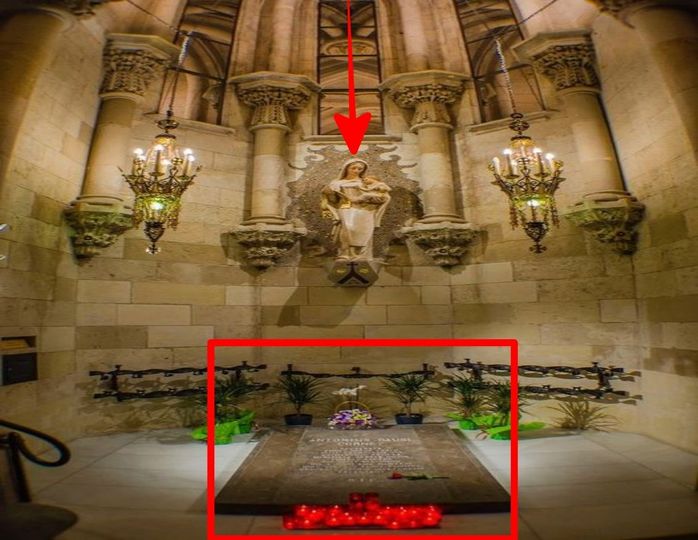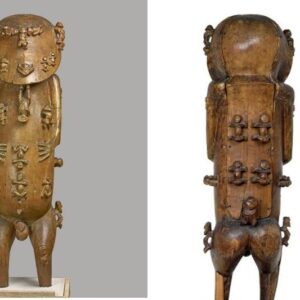Antoni Gaudi, the brilliant Catalan architect, is renowned worldwide for his unique and visionary contributions to the field of architecture. His most iconic work, the Sagrada Familia in Barcelona, stands as a testament to his extraordinary talent and innovative approach to design. This magnificent basilica, still under construction after more than a century, draws millions of visitors each year who come to marvel at its intricate details and awe-inspiring grandeur. However, few realize that within this architectural masterpiece lies the final resting place of Gaudi himself.
Antoni Gaudi was born in 1852 in Reus, Catalonia. Throughout his life, he developed a distinctive style that blended Gothic and Art Nouveau elements with organic forms inspired by nature. His works, characterized by their whimsical shapes, vibrant colors, and intricate mosaics, are scattered throughout Barcelona. Among these, the Sagrada Familia stands out not only for its scale and ambition but also for its profound spiritual significance.

The construction of the Sagrada Familia began in 1882, and Gaudi dedicated the latter part of his life entirely to this project. He moved into the workshop on-site, living and breathing his work. His dedication was so intense that he once remarked, “My client is not in a hurry,” referring to God as the true patron of the basilica. Gaudi’s vision for the Sagrada Familia was a harmonious blend of architecture, nature, and religious symbolism, aiming to create a space that would inspire awe and contemplation.
Tragically, Gaudi’s life was cut short in 1926 when he was struck by a tram. At the time of his death, only a fraction of the Sagrada Familia had been completed. Recognizing his immense contributions and the deep connection he had with the basilica, it was decided that Gaudi would be buried within its sacred walls. His tomb is located in the crypt, beneath the nave, a fitting resting place for the man who envisioned such a monumental creation.
Gaudi’s tomb is a modest yet poignant site. It bears a simple inscription: “Antonius Gaudi, Architect of the Sagrada Familia.” Visitors who venture into the crypt can pay their respects to the genius whose life’s work was devoted to this unparalleled basilica. The location of his tomb within the Sagrada Familia serves as a symbolic gesture, intertwining his legacy with the ongoing construction and future completion of the basilica.
The presence of Gaudi’s tomb inside the Sagrada Familia adds a profound layer of meaning to the structure. It transforms the basilica from a mere architectural marvel into a living testament to Gaudi’s unwavering faith, dedication, and vision. As the construction continues, with completion anticipated in the coming years, Gaudi’s spirit remains an integral part of the basilica. Each stone laid, each sculpture carved, and each window installed brings his dream closer to fruition.
Visitors to the Sagrada Familia often describe a sense of awe and wonder, not only at the basilica’s physical beauty but also at the story behind its creation. Gaudi’s resting place within the basilica invites contemplation of the relationship between art, faith, and legacy. It serves as a reminder that true masterpieces are born not just from talent but from passion and dedication that transcend a single lifetime.
In conclusion, Antoni Gaudi’s resting place inside the Sagrada Familia is much more than a burial site. It is a symbol of his life’s work, his devotion to his faith, and his enduring impact on the world of architecture. The Sagrada Familia, with its intricate designs and towering spires, stands as a monument to Gaudi’s genius. His tomb within its crypt ensures that his spirit will forever be a part of this magnificent structure, inspiring future generations to dream, create, and push the boundaries of what is possible.
News
The stunning Temple of Garni, Armenia. Built nearly 2,000 years ago.
Nestled amidst the rugged terrain of Armenia stands a testament to ancient splendor: the stunning Temple of Garni. Built nearly 2,000 years ago, this architectural marvel is…
Reviving the Ancient Abu Simbel Temples: Restoration Efforts in Aswan, Egypt, 1968
In 1968, an extraordinary feat of human endeavor unfolded on the banks of the Nile River in Aswan, Egypt. The ancient Abu Simbel temples, standing for over…
Rare and Ancient Sculpture of Lord Ganesha Carved into the Rocks at Raghunandan Hills (Unakoti)
Nestled amidst the rugged terrain of Raghunandan Hills lies a treasure trove of history and spirituality — the rare and ancient sculpture of Lord Ganesha, immortalized in…
African Architecture: The Unique Construction of Djenné’s Great Mosque
In the heart of Mali lies a testament to human ingenuity and cultural heritage: The Great Mosque of Djenné. Built with indigenous materials, primarily mud brick and…
Bronze Spartan Shield from the Battle of Sphacteria 425 BC Displayed at Athenian Agora Museum
Among the many treasures housed at the Athenian Agora Museum, one artifact stands out for its historical significance and the stories it holds: a bronze Spartan shield,…
Enigmatic Pacific Deity: Captivating Polynesian Artistry
In the heart of Polynesia, amidst the whispers of the Pacific winds and the rhythm of ancient chants, lies a testament to the spiritual and artistic richness…
End of content
No more pages to load











